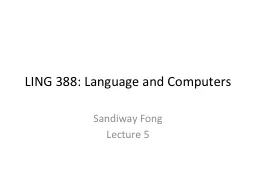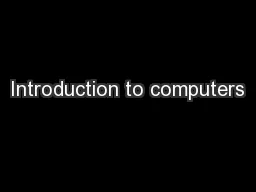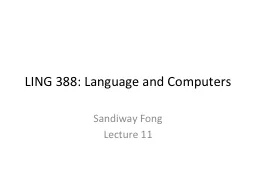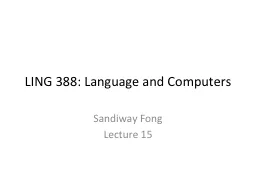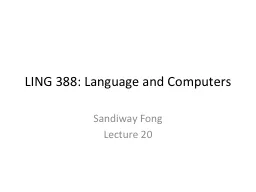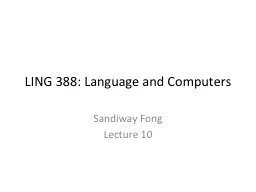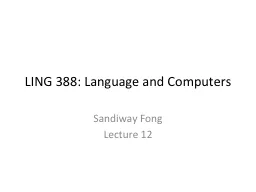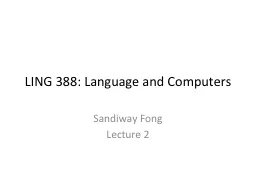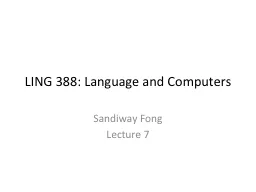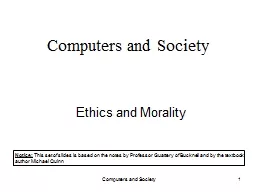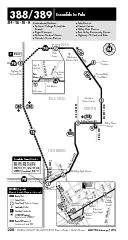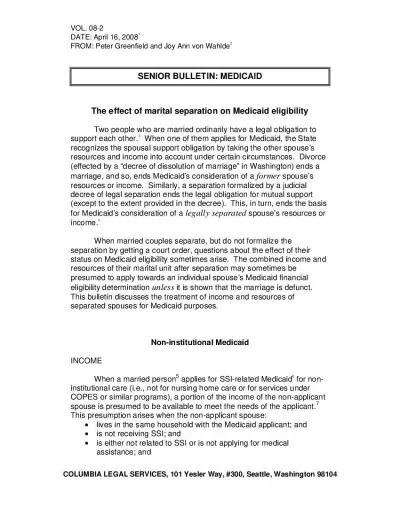PPT-LING 388: Language and Computers
Author : celsa-spraggs | Published Date : 2016-03-19
Sandiway Fong Lecture 5 Administrivia Reminder Homework 2 due this Wednesday by midnight email Ben Martin bamartinemailarizonaedu Todays Topic Recursion Chapter
Presentation Embed Code
Download Presentation
Download Presentation The PPT/PDF document "LING 388: Language and Computers" is the property of its rightful owner. Permission is granted to download and print the materials on this website for personal, non-commercial use only, and to display it on your personal computer provided you do not modify the materials and that you retain all copyright notices contained in the materials. By downloading content from our website, you accept the terms of this agreement.
LING 388: Language and Computers: Transcript
Download Rules Of Document
"LING 388: Language and Computers"The content belongs to its owner. You may download and print it for personal use, without modification, and keep all copyright notices. By downloading, you agree to these terms.
Related Documents

